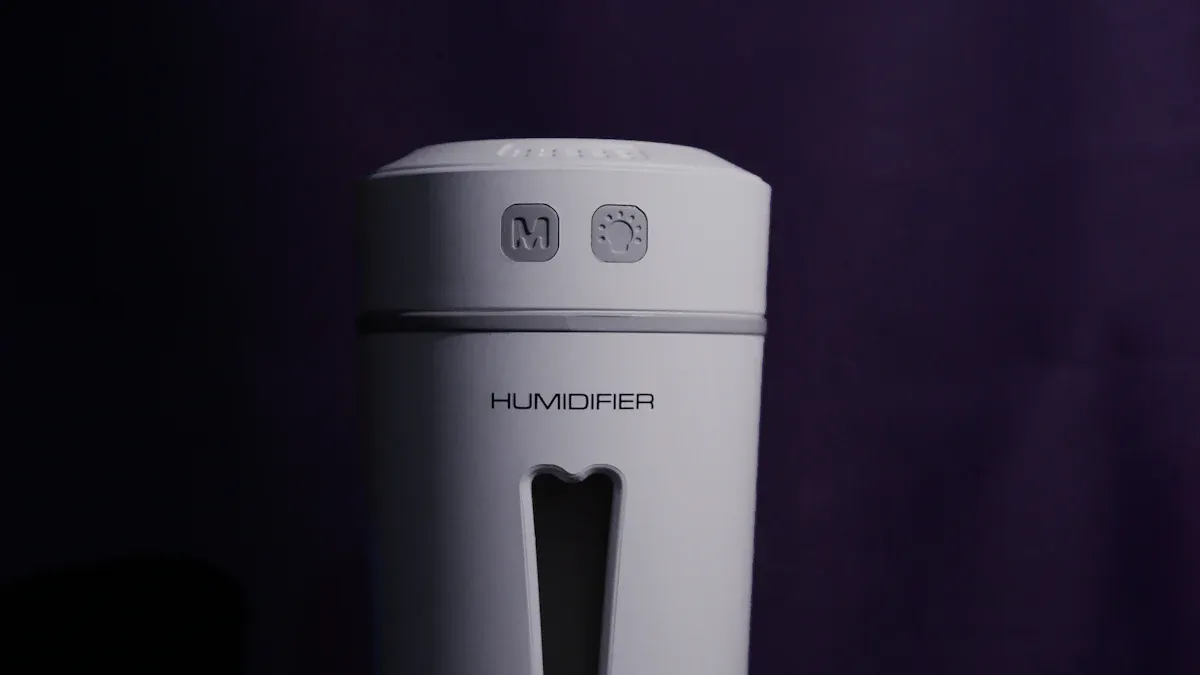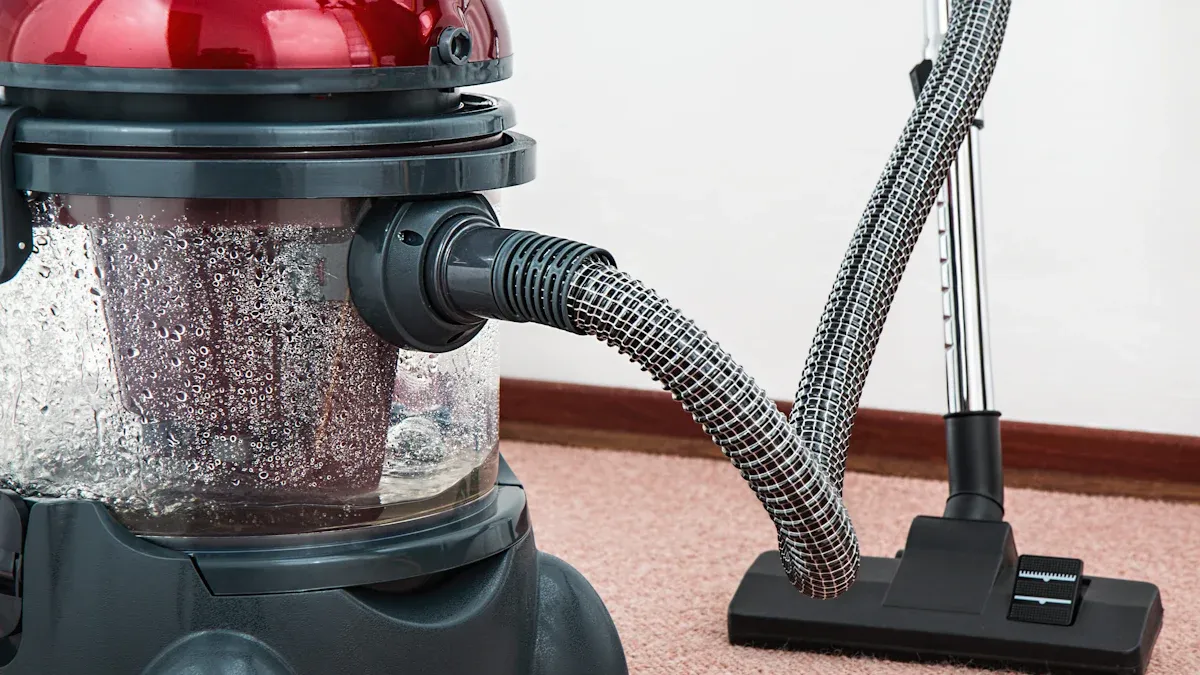
If you’re wondering do air cleaners work for allergies, experts confirm that HEPA air cleaners can reduce allergens in your home. According to the American Academy of Allergy, Asthma & Immunology, these devices may help alleviate allergy symptoms and could even reduce the need for asthma medication. However, the effectiveness can vary from person to person. Some studies show positive results for individuals sensitive to ragweed or those with asthma, while other research finds little improvement for cat or dust mite allergies. Consistent use and proper maintenance of air cleaners are crucial for achieving real benefits.
Key Takeaways
- HEPA air cleaners catch small things like pollen and pet dander. They also catch mold spores. This helps lower allergy symptoms. Put air cleaners in bedrooms or rooms you use a lot. Pick a size that fits the room for best results. Change HEPA filters often, about every 6 to 12 months. This keeps air cleaners working well. Do not use ionic or ozone air cleaners. They can hurt your lungs and make allergies worse. Use air cleaners with cleaning and controlling humidity. Also, close windows during pollen season for better air.
How They Work

Common Allergens
Many things inside your house can cause allergies. Air cleaners help by removing these things from the air. The table below lists the most common indoor allergens and how often they are found in homes:
| Allergen Type | Description/Source | Typical Prevalence in Homes |
|---|---|---|
| Mouse Allergen | From mice, often due to hidden infestations | Found in 75%–80% of U.S. homes |
| Cockroach Allergens | Shed skin, chitin, and toxins from cockroaches | Common, especially in urban areas |
| Dust Mites | Tiny mites feeding on skin flakes, love humidity | 30%–60% of children with asthma are sensitive |
| Pet Dander | Skin flakes from cats, dogs, birds | 60% of people exposed to cat or dog dander |
| Pollen | Outdoor allergen entering through windows/doors | Present indoors during pollen seasons |
| Mold Spores | Airborne spores from damp surfaces | Present when moisture problems exist |
These allergens can float in the air or land on things. Air cleaners work best on allergens that stay in the air.
HEPA and Other Filters
HEPA filters are very good at catching allergens in the air. Here are some facts:
- HEPA filters can trap almost all tiny particles, like pollen and pet dander.
- They use different ways to catch these particles.
- HEPA filters work better than most other filters for allergies.
- You need to change HEPA filters often so they keep working well.
Activated carbon filters are different. They help get rid of smells and gases, like smoke or food odors, by holding them on their surface. HEPA filters catch particles, but carbon filters remove smells and chemicals. Many air cleaners use both types to clean the air better.
Air Cleaner Types
There are different kinds of air cleaners. Each one works in its own way:
| Technology | How It Works | Particle Removal Efficiency | Ozone Production | Maintenance Needs |
|---|---|---|---|---|
| HEPA | Traps particles in a dense filter | 99.97% (≥0.3 microns) | None | Replace filter every 6–12 months |
| Ionic | Charges particles to stick to surfaces/plates | Lower, some particles remain | May produce ozone | Clean plates or surfaces |
| Electrostatic | Uses charged plates to capture particles | About 97% | May produce ozone | Clean plates often |
HEPA filters are best for removing allergens and do not make ozone. Ozone can bother your lungs. Ionic and electrostatic cleaners may leave some allergens in the air and can make ozone. For people with allergies, HEPA air cleaners are usually the best pick.
Note: Air cleaners are good for allergens in the air, but they cannot remove allergens stuck in carpets, beds, or on things. You should also clean your home and control moisture to stay healthy.
Do Air Cleaners Work for Allergies
Research Findings
You might ask if air cleaners help with allergies at home. Scientists have studied this a lot. Here is what they found:
- Portable HEPA air cleaners can lower things like pet dander and mold spores in the air.
- In one study, a portable air cleaner made dog allergen levels drop to 25% of what they were before.
- Air cleaners can cut down on small particles by 30–70%, especially in homes where people smoke.
- These machines work best in one room. How well they work depends on where you put them and how air moves in the room.
- Whole-house filters, like in-duct filters, can lower allergens in the whole house better than portable ones.
- Some studies show people with asthma or allergies have fewer breathing problems and need less medicine when they use air cleaners. But not every study shows the same thing.
- Portable HEPA units in bedrooms can help people who are sensitive because they clean the air near where you sleep.
Scientists agree that air cleaners can lower allergen levels and help with symptoms, but they do not get rid of all allergens in your home.
Expert Opinions
Allergy doctors and indoor air experts often get asked if air cleaners help with allergies. Most say HEPA-filtered air cleaners are good for single rooms. These machines remove things like pollen, pet dander, and mold spores from the air. Experts also say you should use HVAC filters with a MERV rating of 11 to 13 for the whole house.
Here are some tips from experts:
- Do not use ionic or electrostatic air cleaners. These can make ozone, which can bother your lungs and make allergies worse.
- Change or clean filters often, usually every 3 to 12 months, to keep your air cleaner working well.
- Put air cleaners in bedrooms and rooms you use the most.
- Do not use cheap fiberglass filters. They do not catch many allergens.
- HEPA filters can remove up to 99.97% of tiny particles, including many common allergens.
Experts agree: Air cleaners help with allergy symptoms, but you must use and take care of them the right way. They work best when you use them with other ways to manage allergies.
Benefits and Limits
You may notice some good things when you use air cleaners for allergies:
- Less dust, pollen, pet dander, and other allergens in the air.
- You may need less allergy or asthma medicine.
- You might sleep better and breathe easier, especially if you use air cleaners in your bedroom.
- Cleaner air can help people with eczema or skin allergies feel better.
But air cleaners also have limits:
- They only work well in the rooms where you use them. Whole-house systems cover more space.
- Air cleaners cannot remove allergens stuck in carpets, bedding, or on things.
- You must pick the right size for your room and change filters on time.
- Some types, like ionic or UV light purifiers, do not help with allergies and can even make things worse.
- Studies show air cleaners can lower allergen levels, but the improvement in allergy symptoms is usually small and not the same for everyone.
If you ask if air cleaners help with allergies, the answer is yes—they help, but they are not a cure-all. You should use them along with other steps, like cleaning your home and keeping windows closed during pollen season. When you use air cleaners and keep your home clean, you can make your home healthier for you and your family.
Choosing and Using Air Cleaners
Sizing and Placement
When you choose an air cleaner for allergies, you want one that fits your room. Look for the Clean Air Delivery Rate (CADR) on the label. This number tells you how much clean air the machine can make each minute. For allergy relief, pick a model with a CADR high enough for your room size. Most experts suggest aiming for 4–5 air changes per hour.
Where you put your air cleaner matters, too. Here are some tips for best results:
- Place the air cleaner near sources of allergens, like pet beds or windows.
- Keep it within your breathing zone, about 3–5 feet off the ground, or on a table.
- Avoid corners or blocked spots so air can move freely.
- For large rooms, you may need more than one unit or a bigger model.
- Make sure there is space around the machine for air to flow.
Tip: Table placement can help the air cleaner work better and keep dust off the filter.
Maintenance Tips
To keep your air cleaner working well, you need to take care of it. Regular maintenance helps trap allergens like dust, pollen, and pet dander.
- Check and replace HEPA filters every 6–12 months, or sooner if your home is dusty.
- Some machines have filter indicators—watch for these signals.
- Clean pre-filters or washable parts as the maker suggests.
- Schedule regular HVAC maintenance if you use a whole-house system.
- Always follow the instructions in your user manual.
A clean filter means your air cleaner can do its job and keep your air fresh.
What to Avoid
Some common mistakes can make air cleaners less helpful for allergies:
- Forgetting to change filters, which lets allergens build up.
- Using the wrong filter size or type, which lets dirty air leak through.
- Picking ionic or ozone-generating air cleaners. These can make ozone, which can hurt your lungs and make allergies worse.
- Blocking the air cleaner with furniture or putting it in a corner.
- Choosing a unit too small for your room.
Note: Always choose a true HEPA filter and avoid machines that make ozone or ions. These features can cause more harm than good for allergy sufferers.
More Ways to Reduce Allergens

Cleaning Habits
You can make your home healthier by cleaning often. Cleaning helps get rid of dust, pollen, pet dander, and mold. These things can make allergies worse. Try these easy steps to lower allergens:
- Vacuum carpets and rugs two times a week with a vacuum that has a HEPA filter.
- Mop hard floors and tiles often to pick up dust and pollen.
- Use microfiber cloths for dusting. These cloths trap dust instead of spreading it.
- Wash bedding every week in hot water to kill dust mites and remove allergens.
- Put allergen-proof covers on mattresses and pillows.
- Clean ceiling fans, baseboards, and HVAC vents often.
- Make your home a no-shoe zone to keep outside allergens out.
- Bathe and brush pets every week. Keep pets out of bedrooms.
- Wash pet bedding and toys often.
- Do not use plush carpets or heavy drapes. Pick hard floors and washable curtains.
- Keep indoor humidity between 30% and 50%. Use dehumidifiers or exhaust fans.
- Empty vacuum cleaners outside so allergens do not come back inside.
Tip: Clean kitchens and bathrooms often to stop mold from growing. Wipe up water, clean under sinks, and throw away old food every week.
Other Strategies
There are more ways to help with allergies besides cleaning and using air cleaners. These ideas can make your home even healthier:
- Get your air ducts cleaned by a pro every 3 to 5 years. This removes dust mites, mold spores, pet dander, and pollen from your HVAC system.
- Change HVAC filters every 1 to 3 months to keep air clean.
- Use HEPA filters in air conditioners and vacuum cleaners.
- Control indoor humidity to stop mold and dust mites from growing.
- Use exhaust fans in kitchens and bathrooms for better airflow.
- Pick hypoallergenic bedding and furniture.
- Stay inside when pollen is high. Keep windows closed during pollen season.
- Think about allergy testing to find out what bothers you. This can help you plan your treatment.
- Ask your doctor about medicines like antihistamines or nasal sprays if you need more help.
- Try natural remedies like nasal rinses to feel better.
Experts say: Air cleaners work best when you use them with other good habits. Clean your home, control humidity, and follow these tips for the best allergy relief.
Air cleaners with HEPA filters can help you breathe better. They trap dust, pollen, and pet dander from the air. Studies show air cleaners lower allergens in the air. This helps make the air inside your home cleaner. To get the best results, you should:
- Choose a purifier that fits your room size and change filters when needed.
- Put air cleaners in bedrooms and places where you spend time.
- Use air cleaners along with cleaning, keeping the air dry, and closing windows when pollen is high.
Doing all these things together can make your home healthier.
FAQ
What is the best type of air cleaner for allergies?
You should choose an air cleaner with a true HEPA filter. HEPA filters trap tiny particles like pollen and pet dander. Avoid ionic or ozone-producing models. These can make allergy symptoms worse.
What size air cleaner do you need for your room?
Check the Clean Air Delivery Rate (CADR) on the label. Match the CADR to your room size. A higher CADR means more clean air. Use one unit per room for best results.
What maintenance does an air cleaner require?
You need to change HEPA filters every 6–12 months. Clean pre-filters if your model has them. Always follow the instructions in your user manual. Regular maintenance keeps your air cleaner working well.
What other steps help reduce indoor allergens?
Vacuum with a HEPA filter, wash bedding weekly, and keep pets out of bedrooms. Control humidity with a dehumidifier. Clean your home often. These steps work with air cleaners to lower allergens.
What are common mistakes when using air cleaners?
Many people forget to change filters or pick a unit too small for the room. Some block airflow by placing the cleaner in a corner. Avoid ozone-producing models. Always read the instructions for best results.
See also
What Size Air Purifier Is Needed for Bedrooms, Living Rooms, and Offices
Uncovering the Truth About Air Purifiers and Their Safety
How many air purifiers are needed for different room sizes
What to Consider Before Putting an Air Purifier in Every Room
